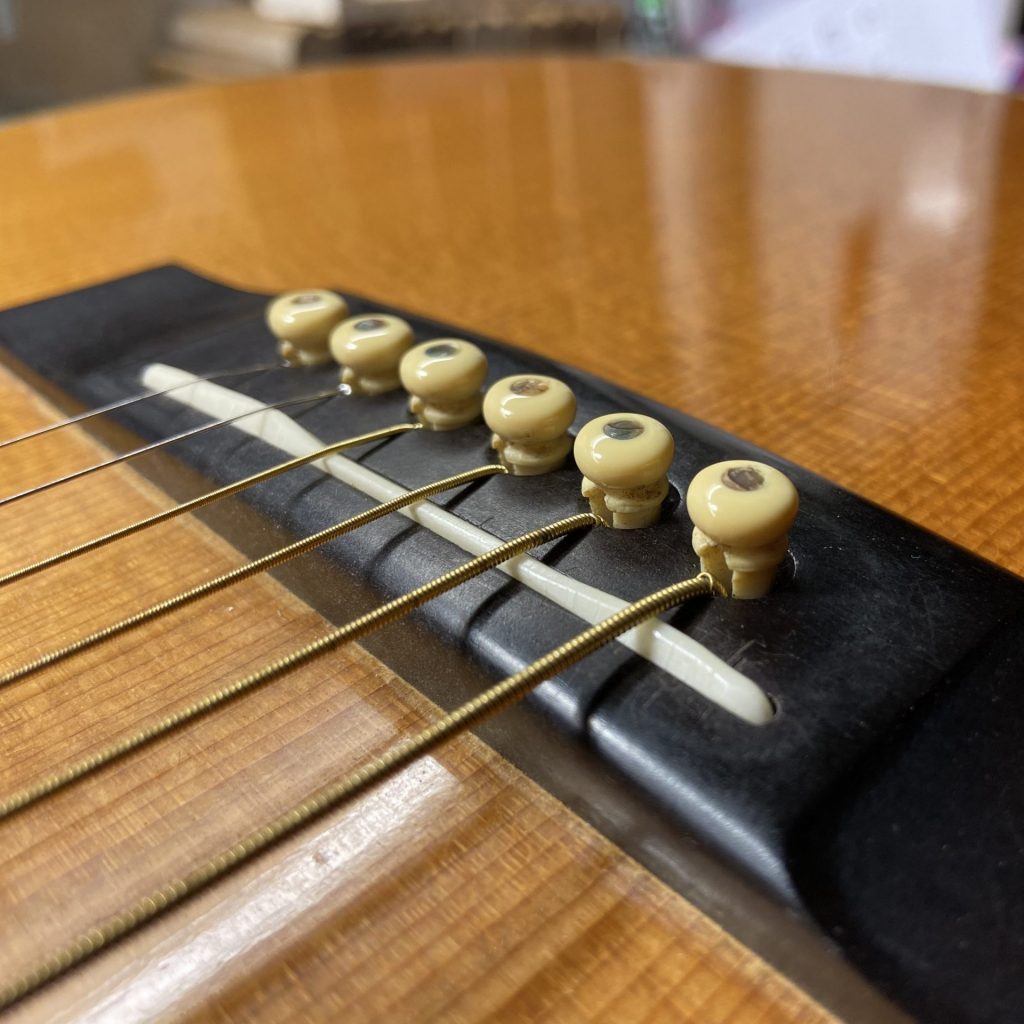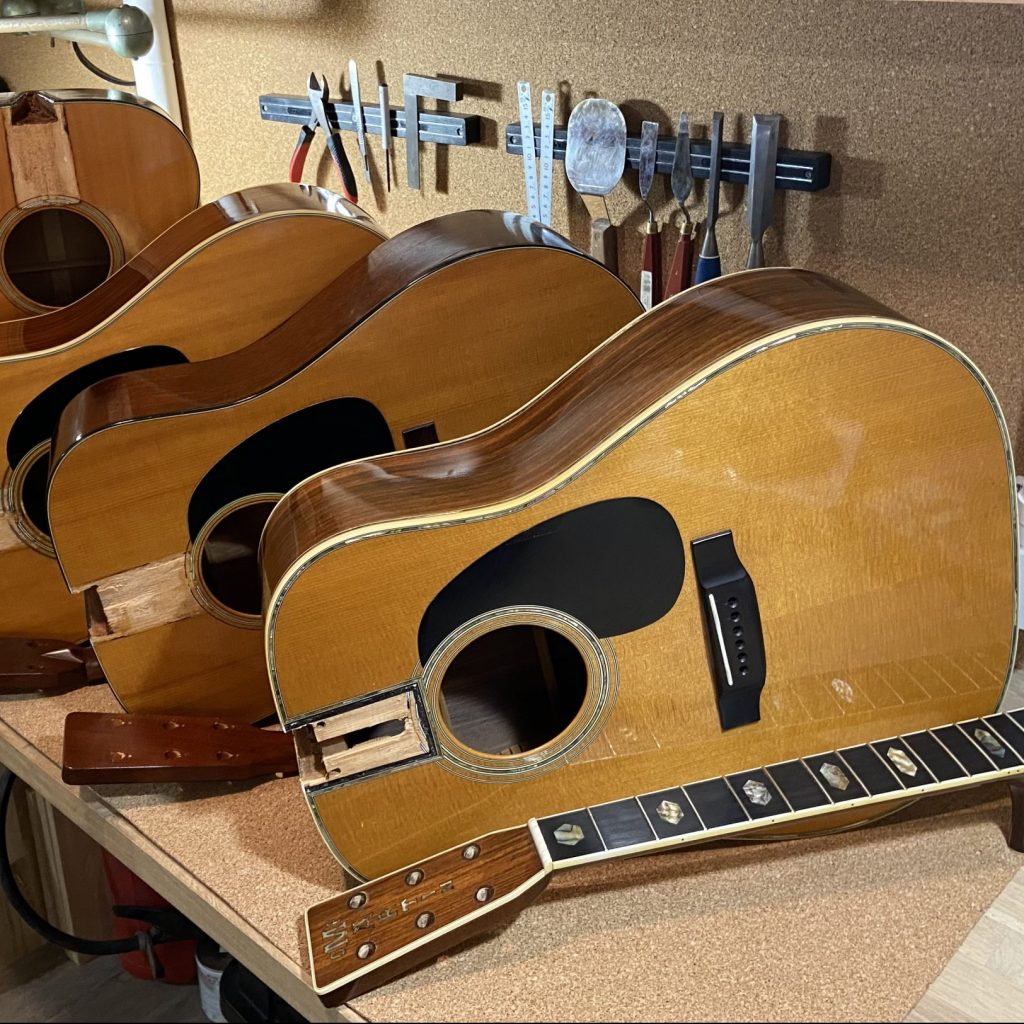Neck Reset
The term neck-reset refers to taking the neck off a guitar to correct its tilt angle in relation to the body, before reattaching it in its correct position. Neck angle has a major impact on the proper functioning of an instrument and must be correctly calculated. A well-positioned neck is the basis from which we carry out the work of adjusting the height of the strings on the bridge nut, without it being too high or too low. Too high, it could break the bridge and the strings as excessive height goes hand in hand with too much tension. Too low, the pressure of the strings on the saddle of the bridge would no longer be sufficient and can generate buzzing during playing.

How to know when your guitar requires a neck-reset
There are two major cases when a neck-reset becomes necessary:
1. You own an acoustic guitar (often Martin or Gibson brand) that is already of a certain age. Over the years and under the tension of the strings, the top may have become deformed and we can note a belly forming around and under the bridge. Naturally, string height is influenced by this phenomenon and you will notice a very high string action.
To remedy this problem and regain a comfortable string action while preserving a saddle with sufficient height, a neck-reset becomes essential.
We often see bridges that have been planed to reduce their thickness with the aim of being able to lower the strings, but this process often unfortunately has no other result than degrading the original part of your instrument and with the value of your guitar, without even allowing it to function properly.
2. The neck angle of your guitar (new or old) was miscalculated during its manufacture and needs to be corrected to transform this object into a comfortable musical instrument to play.
A high-precision operation
A neck-reset is very delicate work requiring significant experience in order to accomplish it without damaging the guitar.
The neck is detached with special tools using steam. The varnish must be well protected to avoid damage. The neck is then adjusted to the correct position (both its angle and laterality in relation to the body) before being glued back into the mortise. Often, making a shim is necessary. It is glued between the end of the fingerboard and the soundboard to prevent the fingerboard from “diving” downwards at the end. This shim is barely visible and guarantees a straight fingerboard along its entire length despite changing the angle of the handle.
After a neck-reset, the guitar is systematically refretted and the bridge nut replaced if it was too low before the procedure.
The goal of this operation is to regain perfect playability with all parameters adjusted to the correct height, while restoring value to your guitar.
We have the experience and delicacy necessary to accomplish this work.


